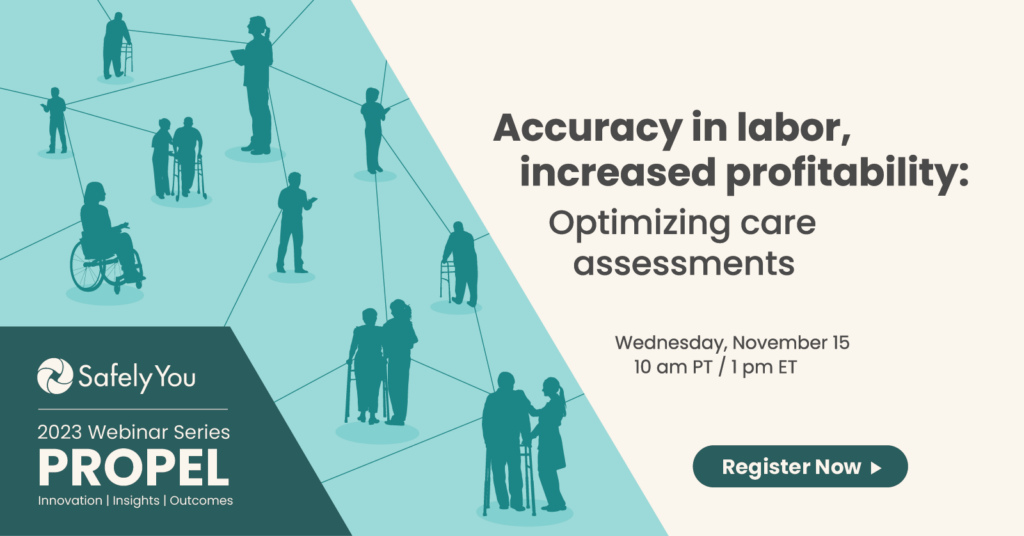Mobility aids are necessary for many people living with dementia, but these helpful devices can actually increase the risk of falls. In fact, people with dementia are three times more likely to suffer a fall when using a mobility aid, such as a cane, walker or wheelchair, compared to not using one at all, according to an Alzheimer’s Association-funded study designed to dig deeper into why this is so. As with most care plans for residents in memory care, the most appropriate mobility aid for any particular person can be a moving target as ambulation ability, balance, eyesight and cognition change over time.
In order to reduce the risk of falls posed by mobility aids in memory care communities, we need to look at several considerations. Here are a few suggestions based on our observations of thousands of videos of falls from our partner memory care communities:
A trained Physical Therapist should assess if the correct aid is being used. There are quite a few options for wheelchairs, walkers, canes and lifts, and a trained professional will observe a person’s gait, balance and daily use of the aid to determine which type best suits that particular individual.
Make sure the resident uses the device properly. This can be one of the biggest challenges when working with people living with dementia. Some residents can be trained on new mobility devices; however, for some, it can be a lot more challenging. We often see residents using wheelchairs as walkers, which can easily gain momentum and cause a fall. Would the resident do this if there was a walker within reach? Would a locked wheelchair prevent this action?
Consider the placement of the mobility aid within each room. Again, the most appropriate placement will vary for each resident, but making sure the aid is either within line of sight or within reach is key for residents on the move. When placing a walker or wheelchair next to a resident’s bed or chair, leave it at a 45-degree angle facing their strongest side. Check for trip hazards like small tables and floor mats that can interfere with the resident’s path.
Be aware of physical and cognitive changes and be open to changing out the device in use. A great way to prevent falls involving mobility devices is to use the care staff’s periodic wellness checks to assess the room and resident for the correct set-up. They should consider: Is the walker or wheel chair in the best position for this resident? Should the device be locked or unlocked? Can I help to re-position the resident in their bed or chair to reduce the likelihood of falling when they go to self-transfer?
Mobility aids definitely help those living with dementia enjoy greater freedom and independence as well as boost their confidence and self-esteem. With the proper assessment, fit and use, mobility aids can greatly improve the quality of life for memory care residents while enabling fall prevention in memory care.





